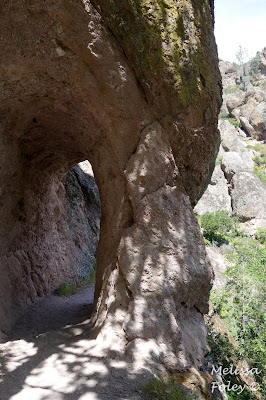Try as we might, we have not been as good at getting out and exploring since we've been back in California. There is a long list of reasons - illness, injuries, little vacation time at the new job, adjusting to living in different places for half the week - but one of the most challenging has been competing with the other nine-ish million people in the greater Bay Area who seem to also want to explore the great outdoors on the weekends. In NZ we would often make plans a couple weeks in advance (longer for holiday weekends), but it seems like here we need to be making reservations six or more months in advance. Sigh.
Despite those limitations with camping, we have been getting out nearly every weekend to hike and explore some familiar and not-so-familiar local spots.
-->
Despite those limitations with camping, we have been getting out nearly every weekend to hike and explore some familiar and not-so-familiar local spots.
An early bloomer (January) in the Santa Cruz Mountains – fetid adder’s
tongue
The redwoods were also happy with the wet winter. These
are the
two types of cones on redwoods; the larger, female
cone is on the left; the
smaller, male cone is on the right. It
is amazing these giant trees start
from such small beginnings.
The Santa Cruz sandhills are a fragmented habitat near our house
that are home to many endemic (not found anywhere else) species of plants. Once
a year, our favorite county park hosts tours into the sandhills, which are off
limits the rest of the year. There is some sandhill habitat in other parks that
we can access, but this tract has been protected for much longer and has a more
diverse assemblage of plants.
sandhill habitat - this used to be under the ocean!
(see below for super lupin bloom)
Ben Lomond wallflower -
this endangered plant is extremely rare, only
growing
in a 9 x 5 mile swath in the sandhills. Development and
fire
suppression have been the demise of this species. It takes
two to
three years for the plant to flower and seed,
making it more susceptible to
changes in its habitat.
The sandhill poppy is an ecotype of the California poppy.
The sandhill poppy is a more yellow version of
the state's
The Ben Lomond spineflower is another
endangered
sandhill species. The spineflower is more abundant
than
the wallflower, but because of its habitat specificity,
it is also very rare. It is one of
my favorites.
A couple weeks after our sandhill hike, we
headed over to Pinnacles National Park for another wildflower hike. I managed
to get us a camping reservation four months ago, but could only get us a spot
for Friday night. They have some walk-up sites that you can get the day of, but
when I inquired about them the ranger told me I would need to be standing in
line at 6:30 am for the 9:30 am opening. Needless to say, we only stayed one
night.
California Poppy
Bitterroot
Chinese Houses
Gray Mule Ears
An old acorn woodpecker cache. Some of the acorns were sprouting!
Butterfly Mariposa Lily
Silver Puffs
Heading up towards the high peaks rock formations
Jewel Flower - a new species for us
Volcanic rock formations look otherworldly in the surrounding habitat.
Western fence lizard
Our view for second breakfast
Crinkled Onion
The work that went into making the trails through this
landscape is remarkable. There are a number of tunnels in
the park because there wasn't anywhere else for the trail to go.
The outflow from the Bear Gulch Dam and Reservoir
The flowers are continuing to bloom at our local parks too. Last weekend we were treated to a "super bloom" of lupins at Quail Hollow. Today we explored the trails at the Glenwood Open Space Preserve and found a few new species there too. It is fun to see spring bloom throughout the different habitats that are in close proximity to our house.
Lupin bloom
Pink mallow
The beautiful globe lily































